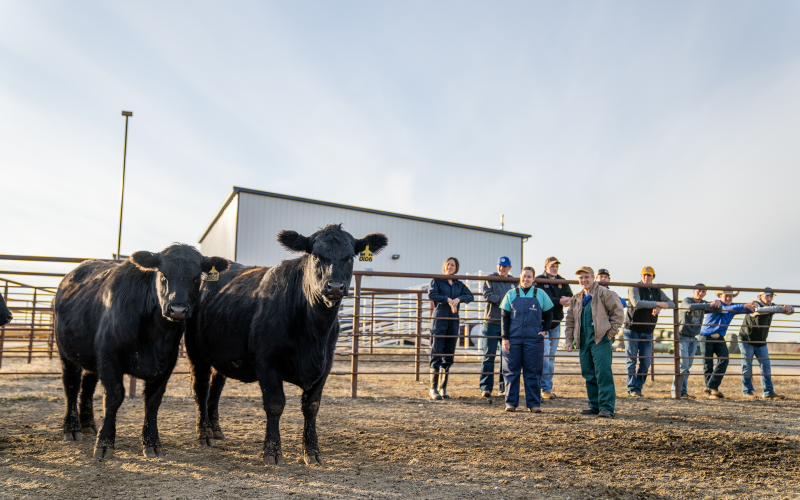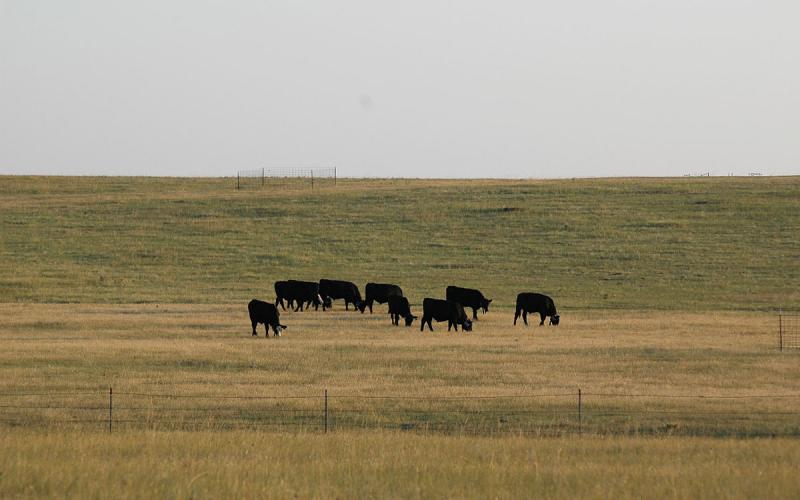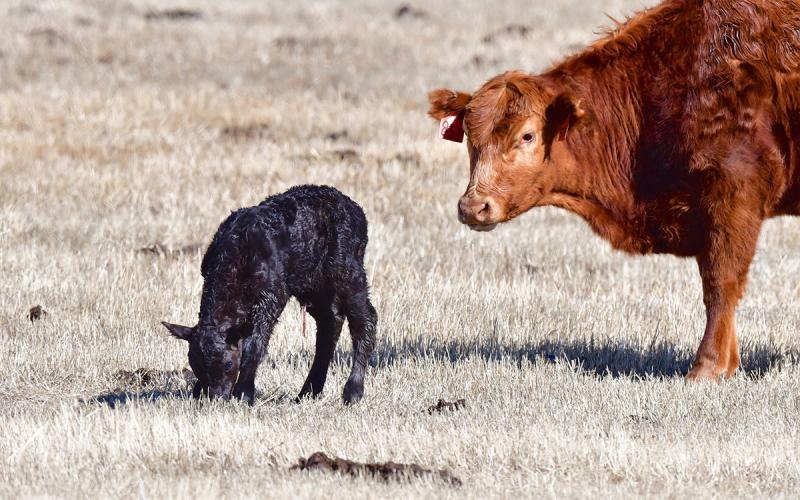Written by Madison Kovarna, former SDSU Extension Beef Nutrition Field Specialist.
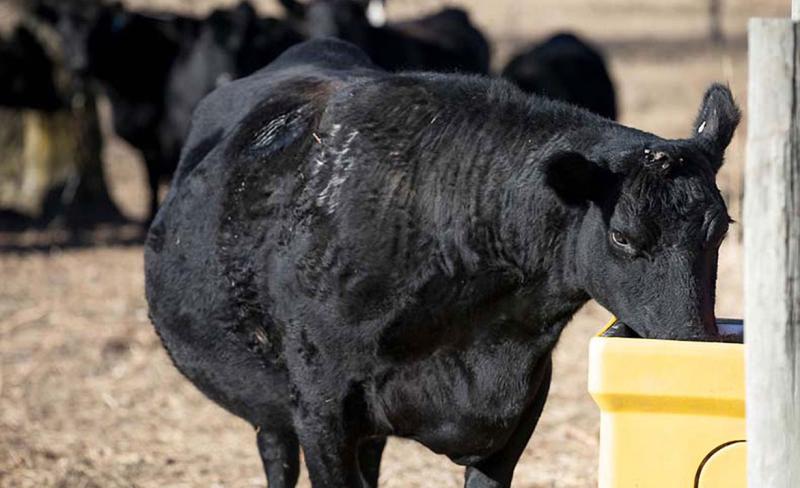
Introduction
Water is a vital nutrient needed to sustain all forms of life. In beef cattle, water is used within the body for growth, reproduction, lactation, and regulation of body temperature, along with many other processes. Without adequate supplies of water, these processes cease or slow, causing reductions in performance or even death. Given the importance of water to the body, it is imperative that researchers and producers alike understand factors that influence water intake in beef cattle.
Water consumption needs to be further understood; however, water intake in beef cattle has proven to be difficult to estimate. This is due to animal individuality and an earlier lack of technology. Recently, technology has been developed to collect information on water intake on an individual animal basis and has proven extremely useful. These developments in technology have allowed researchers to further examine water intake patterns and amounts in cattle. Additionally, researchers are looking into developing equations to predict water intake in beef cattle. These equations utilize predictors, including weather, feed intake, and growth parameters to estimate water intake. While these equations are not exact, they supply important insight into estimated water intake levels. These estimations can be used to ensure adequate supply is met for cattle in water fountains and tanks.
Water Intake and Weather
Water intake levels can be influenced by environmental conditions, such as weather. While weather’s impacts on water intake are more often considered during the warmer summer months, it is important to recognize that weather plays a vital role in animal behavior and, subsequently, water intake during the colder winter months. Weather indices, such as heat index and wind chill have been used to explain how a combination of weather variables feels to the body. Temperature and humidity are combined and accounted for within the heat index, while wind chill accounts for the combination of temperature and wind speed to determine heat loss from exposed skin.
During periods of hot temperatures, water intake increases to aid in cooling the body and to replenish water lost due to sweating, respiration, and urination. In contrast, wintry weather causes an increase in feed intake, as animals look to maintain internal body temperature. Also, given the cooling properties of water, animals may drink less water in further efforts to maintain body temperature until more-comfortable weather conditions are met. Additionally, animals will exhibit behaviors that conserve body heat, such as bedding down or gathering tightly in groups, which limits their movement and may cause less-frequent visits to a water source. Even given these behavior changes, liquid water that is free of ice should always be available during winter months. Additionally, water supply should never be restricted no matter the weather conditions at hand.
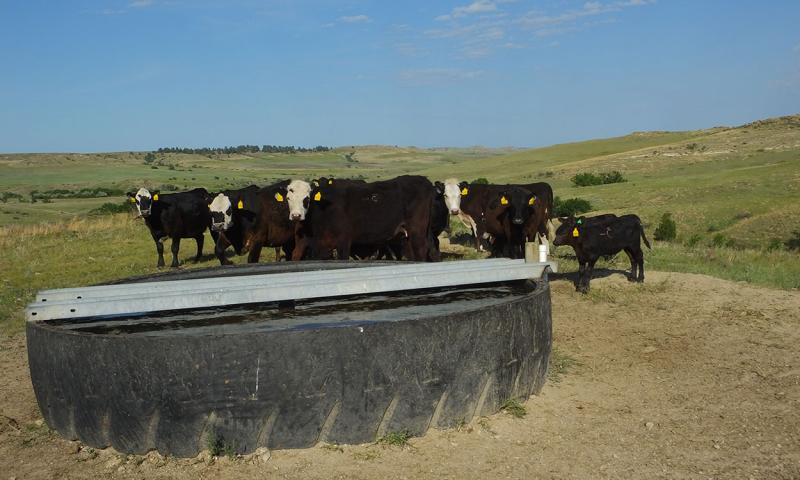
Water Requirements
The rule-of-thumb is that non-lactating females and bulls require one gallon of water per 100 pounds of body weight. In a lactating female, the requirement is increased to two gallons per 100 pounds of body weight. These requirements are estimations, and animals can drink above or below this amount given the environmental conditions they are facing. Space at a water source and water flow should also be accounted for based on expected weather conditions. Typically, 1.5 inches of waterer space per animal is sufficient, however, a general guideline is that cattle require three linear inches of water space per animal during the summer months.
Water Testing
Water quality can be of concern for livestock producers within South Dakota, and water quality tests should be conducted on at least an annual basis. If you are concerned about your operation’s water quality, contact your local SDSU Extension agent, as a quick and free-of-charge on-site water test is available at all SDSU Extension Regional Centers and some SDSU Extension County Offices across the state.
